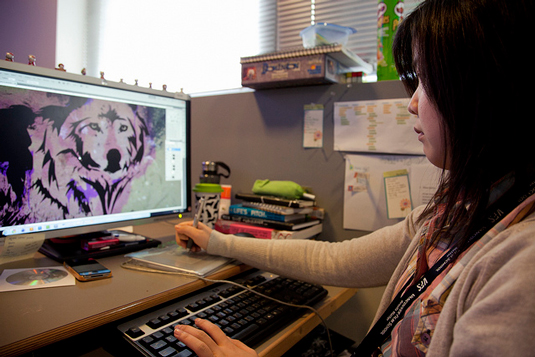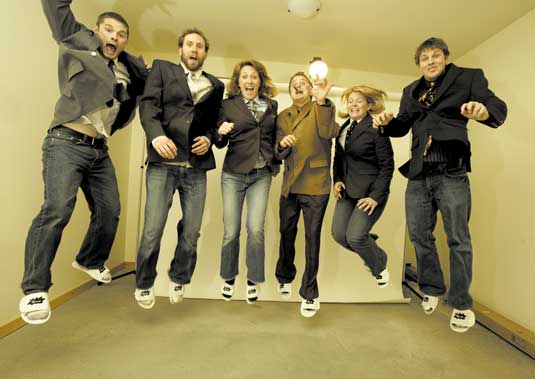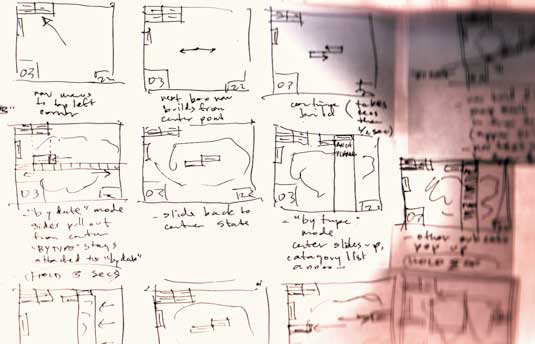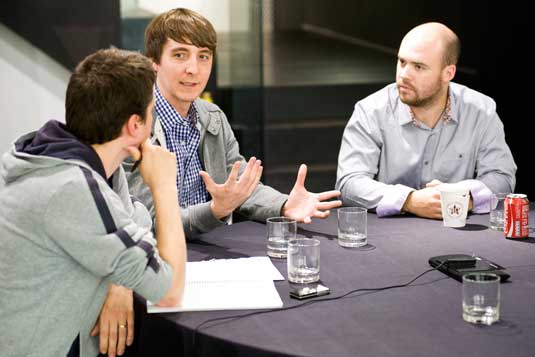How to manage other designers: 10 expert tips
Leading a design project can be a big challenge. Pete Sena of marketing agency Digital Surgeons has some pointers to guide you to people-management success.
At some point in your design career, you'll be tasked with managing a project, whether informally as a lead or senior designer or formally as a fully fledged project manager. So how should you go about it?
Good design is the intersection of art, science and business. Managing designers is about empowering them to allow all three of these tenets shine through. This isn't an easy task, however. Deadlines get shorter and shorter. Client and project expectations grow by the day. What was seen as progressive yesterday is cliché today.
Tips and tricks
There is no silver bullet to managing other designers but there are a few tricks to it that I’ve picked up along the way.
I started my career as a designer and I now manage a team of designers, developers and strategists to the best of my ability. These following tips have held true for me throughout my career, from both sides of the table.
- Read all our career-related posts here
01. Remember good design takes time

Original, thought-provoking work takes time and 'creative block' is a real thing. As a designer, you know this instinctively. But when others take a long time to come up with a design, it's easy to think they're just being lazy or lack commitment to the project.
You need to take a step back and recognise that good design takes time. For instance, always give your designers a deadline that has a little bit of padding built in for emergencies. If you know you have until Friday for a design, the internal deadline you set should be Wednesday or Thursday. (Of course, don’t explicitly state this fact or you will never receive anything on time again!)
02. Get the brief right
Write briefs that actually convey what the designers need to know. There’s nothing worse than having a weak brief or no brief at all.
Get the Creative Bloq Newsletter
Daily design news, reviews, how-tos and more, as picked by the editors.
Designers are problem solvers but they need to have a clear understanding of the problem first. Yet in most cases the designer is the last person to be aware of the project details and is expected to deliver magic.
A good brief needs to capture the constraints of the project (timing, budget, things that are off limits). Telling a designer they have two days versus two hours makes a huge difference in how the problem is tackled. It's also important to provide the designer with all relevant background information (audience, research, inspirations).
03. Get your designers away from the Mac

Analogue is faster than Photoshop. Communication and collaboration through multiple mediums captures the best ideas. Whether it’s a sketch or a whiteboard, encourage your designers to turn off Photoshop for the beginning of any project. Old-fashioned collaboration is faster and more inclusive.
04. Separate ideation from execution
Creative projects are like a reverse funnel: they start out by capturing as many ideas as possible, followed by finding the best idea for the constraints of the project. There’s a time for ideas and there’s a time for execution. No one wants a new concept brought to the table a day before the design is due. Know what stage you are at in the process and make sure your designers do too.
05. Define the level of innovation needed

Not every project has the time or budget to constantly reinvent the wheel. Sometimes clients just need to repurpose existing assets and creative to achieve their goals. Make sure your team is clear on these expectations from the start.
06. Never forward feedback emails
A manager’s job is to shape the needs of the client into actionable, concise directed feedback. Offer the original information if requested but still include focused feedback for the designer on top of that. They will be able to tackle the problem faster without wasting time or budget. If all that a project manager does is forward emails from the client, what role are they actually playing?
07. Get more out of meetings

Be sure every meeting is actionable and designed. Kevin Hoffan is someone I’ve had the pleasure of working with lately and he changed how we look at meetings. By running smarter meetings with your designers, the amount of time spent designing versus meeting will be greatly improved. In the meantime, Kevin’s site is a good starting place to begin planning meetings more effectively.
08. Deliver honest feedback quickly
Don’t sit on feedback or sugar-coat it. Sometimes a design is great from an artistic standpoint, but not so much from a business standpoint. If a client hates something, keeping that from a designer to protect their feelings only serves to further endanger the project. Remember: design is a job and a particular designer may not always be right for the job or the client.
09. Don’t hide designers from clients
Always allow your designers to be in meetings and have a voice. Strategy and learning comes from being in meetings and collaborating with the team and clients. The designer is going to be translating the problem into a solution and should be treated accordingly.
10. Know when to back off
Creativity is a process. Know your team and how they work. Offer formal creative reviews and help where you can but when they are in the zone leave them be.
At times managing the design process might feel like herding cats or dribbling a football. This is normal. It is so hard to assign an hour estimate to a creative process.
Conclusion
While these tips may not guarantee that every breakthrough idea comes in exactly 1.75 hours of brainstorming, they will certainly help out the process.
Is there anything else that you find extremely effective in managing designers? Did I leave something out? Follow me on Twitter. I would love to hear your feedback!
Words: Pete Sena
Pete Sena is the founder of Digital Surgeons, a digital marketing agency in New Haven, CT. A hybrid designer/developer who lives to create unique and powerful experiences for brands, if Pete ever takes a break he's probably reading, teaching himself something, attacking Crossfit or snowboarding.
Liked this? Read these!
- How to build an app: try these great tutorials
- Illustrator tutorials: amazing ideas to try today!
- Brilliant Wordpress tutorial selection
Have you had difficulties managing other designers? Tell us about your experiences in the comments!

Thank you for reading 5 articles this month* Join now for unlimited access
Enjoy your first month for just £1 / $1 / €1
*Read 5 free articles per month without a subscription

Join now for unlimited access
Try first month for just £1 / $1 / €1

The Creative Bloq team is made up of a group of art and design enthusiasts, and has changed and evolved since Creative Bloq began back in 2012. The current website team consists of eight full-time members of staff: Editor Georgia Coggan, Deputy Editor Rosie Hilder, Ecommerce Editor Beren Neale, Senior News Editor Daniel Piper, Editor, Digital Art and 3D Ian Dean, Tech Reviews Editor Erlingur Einarsson, Ecommerce Writer Beth Nicholls and Staff Writer Natalie Fear, as well as a roster of freelancers from around the world. The ImagineFX magazine team also pitch in, ensuring that content from leading digital art publication ImagineFX is represented on Creative Bloq.
